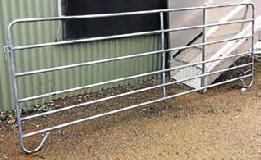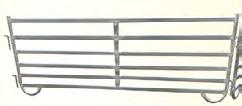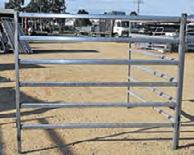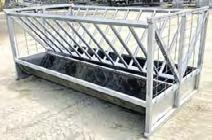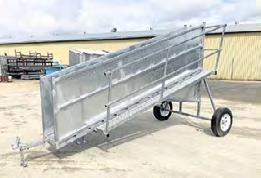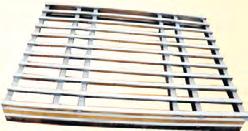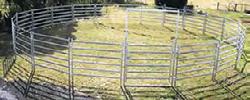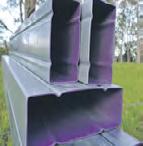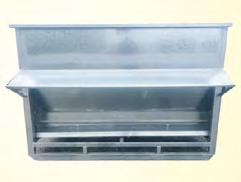





July Edition:
June 23, 2023
August Edition:
July 28, 2023
September Edition:
August 25, 2023
October Edition:
September 22, 2023
November Edition:
October 20, 2023
December Edition:
November 17, 2023
February Edition:
January 26, 2024
March Edition:
February 22, 2024
April Edition:
March 22, 2024
May Edition:
April 26, 2024
June Edition:
May 24, 2024





Heuses the GIS technology to map the company’s vast network of infrastructure and assets, and to collect other integral data. It’s complex, at times all-consuming, work. He’s actually been known to wake up at 4am with the solution to a problem that may have been vexing him for days!
The information that Phill spends his days gathering, analysing and sharing is helping to ensure that Murray Irrigation has a full picture of what is happening on the ground. This is critical to the ongoing and efficient running of the company’s water delivery system.
Phill also used this GIS technology and his expertise to assist Edward River Council to identify low spots around Deniliquin during last October’s floods, helping them to determine where the river was running.



“The work can be challenging at times, but when things are going well - and the program is working well - it’s a great job,” Phill said.

“It’s probably the best job I’ve had since I started working in this business.”
These words from a man who recently notched up 50 years’ service at Murray Irrigation.
In the past five decades, Phill’s work responsibilities have ranged from nine to five hours in the office, to long days in the great outdoors. And he has embraced every opportunity to learn, build new skills and grow professionally along the way.
Phill’s current role is a far cry from the work he was tasked with when he first arrived at the company’s Finley yard in February 1973, just “a skinny young kid”. He only has to look out the window from his desk to see the exact spot where it all started.
“I can’t remember much about my first day – but I know it was hectic, because I started in the store,” Phill said.
“You could say I’ve come full circle, because that store is only 150 metres from where I’m sitting now.”
In 1973, Murray Irrigation was still a government-owned entity, being run by the Water Conservation and Irrigation Commission (WCIC).

 Adrienne Hartnett CONTRIBUTOR
Leesa Muir GENERAL MANAGER & ADVERTISING
Jennifer Ho TRAINEE GRAPHIC DESIGN
Rebecca Flisher CREATIVE MANAGER
Zoe McMaugh CONTENT MANAGER
Kimberly Grabham CONTRIBUTOR
Adrienne Hartnett CONTRIBUTOR
Leesa Muir GENERAL MANAGER & ADVERTISING
Jennifer Ho TRAINEE GRAPHIC DESIGN
Rebecca Flisher CREATIVE MANAGER
Zoe McMaugh CONTENT MANAGER
Kimberly Grabham CONTRIBUTOR
Over the next 22 years, this body would undergo a further two identity changes (becoming NSW Water Resources Commission in 1976 and NSW Department of Water Resources in 1986) before control and operation of the system was handed over to the irrigators in 1995, marking the birth of Murray Irrigation as we know it today.
As a young stores officer, Phill spent busy days delivering a constant supply of stock and equipment to the bustling Finley workforce, which was responsible for operating the channel system between Mulwala to the old Deni CSIRO station south of Conargo. Orders were sent to Sydney and transported by rail.
With not even a hint of computers on the horizon, each piece of inventory had to be painstakingly documented into a giant ledger book.
At that time, the Finley site employed around 140 people. There were welders, mechanics, carpenters, tyre fitters and apprentices. Not to mention the “outdoor guys”, such as the dragline excavator operators who would clear debris and other build up away from the channels, and the teams of channel maintenance workers, who could often end up soaking wet over the course of their day.
Phill spent more than 10 years of his career at Murray Irrigation right at the coalface, delivering water to farmers as a channel attendant.
This was at a time when water orders were still largely being taken via a water card system. Farmers would write down their orders on small white cards and leave them in an order box for the water channel attendants to collect.
After the orders had been called through to the office, the water delivery could begin. Gates had to be opened and heavy redgum drop bars had to be lifted to complete the order. It was physically demanding stuff - and not for the faint hearted.
“Now they push a button for the gates, they push a button for the outlets, and away they go,” Phill said.
He is, of course, referring to the evolution Murray Irrigation’s water delivery network has undergone in the past 20 years or so.
The once manually operated system that required boots on the ground has been automated and is now controlled remotely.
With 50 years’ service under his belt, it would be safe to say that Phill’s fingerprints are everywhere across the business.
By way of example, he was actively involved in the establishment of the first touch-button water ordering system that was a precursor to the sophisticated system
Murry Irrigation has today. He also participated in the mammoth task of mapping the company’s entire assets following privatisation in 1995.

“There were three of us - Barry Basham, Michael Telford and myself - we went out there with GPS units and we GPS’d every structure that we had in the system,” Phill said.
“And that’s how our current GIS system started.
“We’d be out there with backpacks, trudging around the farms, collecting all the data - where all the wheels were, where all the stock points were, where all the bridges were - taking a point.
“We’d collect the data and go back into Deni every Friday because we had a real time GPS unit at the office. We’d post-process the data back into the system, and that would then bring it all into alignment with surface.
“We did that for about 12 months. We had everything we needed in the system GPS’d, and then we went through and developed what we’ve basically got today.”
Phill admits there’s probably not a channel across the Murray Irrigation system that he hasn’t traversed at some point during his career. And with his travels have come an array of colourful tales; especially of the old days.
His experiences working as a relief payroll officer back in the ‘70s are the perfect case in point.

As Phill explains, paydays back then would begin with a morning run out to the gangs working around Berrigan, Jerilderie and Mulwala. It was all cash, and the payroll staff made sure they were suitably prepared for any situation.
“We carried a little revolver with us on those runs (I think it was a Colt 45) just in case of armed robbery,” Phill said.
“There would be four of us in the vehicle - two in the front and two riding shotgun in the back, just like the Wild West set up on a stagecoach.”
But the past 50 years haven’t all been about work.
In 1973 he met “a lovely girl”, Jennifer, at a 21st birthday party. They married in 1975, raised two daughters, and today have four grandchildren.
Amidst work and raising a family, Phill has also made time for community. He has served as an on-call firefighter with the local Fire and Rescue NSW outfit for 49 years (he is currently second in charge). He has also been an avid sports participant and has contributed to the local golf club as a President and Captain.
Despite having 50 years behind him, Phill has no plans of slowing down any time soon.
“I’ve had a good journey, and it hasn’t stopped yet,” he said.
“I just want to keep the brain going for as long as I can. It’s got to help you in the long run.”
This will in turn create a more profitable and planet friendly outcome providing futuristic manufacturing materials to multiple industry sectors as well as healthy, sustainable food and health products.
And Broadleaf Hemp CEO Dylan Wood says the NSW Murray Valley is primed to take advantage.
“We have been trialling just about every possible way to grow and process hemp since 2017,“ he said.
Broadleaf Hemp is an Australian Hemp seed, food and fibre company - forming strategic partnerships, developing seed/fibre industries and growing cooperatives globally.
Hailing from the Northern Rivers district, Mr Wood said the 2022 floods put them nearly two years behind with their farming as there was just “too much water up here for hemp, so I grew rice instead”.
“Our big picture is to increase agriculture on a federal scale through initiatives,” he said.
“The initiatives will take efficient use of water into account to provide the maximum benefit to farmers and the economy.”
Mr Wood said this region is ideal as a growth region of hemp farming due to its large cropping areas, multigenerational farmers and their extensive equipment and existing irrigation systems.
Hemp seed is one of the healthiest sources of protein on Earth.
It requires less water than conventional crops to grow, allowing more drought resilient fibre industries and efficient protein production.
“It can be grown with little to no artificial sprays or fertilisers, if maintained properly in regenerative rotation, and pulls carbon out of the atmosphere to sequester the ground,” he said.
Regenerative farming with hemp can help to increase soil carbon levels rapidly, which is beneficial to water retention and increased fertility.
Many farmers overseas have reported better yields of other crops after growing hemp.
Hemp uses 3-5 megalitres of water per hectare on average, although sometimes it can be more.
In comparison, rice requires 12-15 megalitres of water per hectare.
An overhead irrigation system is the most economical form of watering, but flood irrigation can also be applied to hemp.
“The hemp crop returns can be compared to that of a corn crop in the Deniliquin region,” Mr Wood said. “Cotton is not as attractive a comparison as corn in dollars per hectare returns.

The Australian hemp industry is working towards bringing regenerative agriculture to farming rotations, to future-proof the farming sector through diversity.
“If you took into consideration the overheads and specialist machinery required to grow cotton it balances the comparison out.
“We are focused on water usage, salinity and the mental health of farmers and their businesses.”
The company’s goal is to value add to raw hemp materials, to create a sustainable manufacturing industry in Australia.

Broadleaf Hemp supplies seed, provides agronomic advice and biomass purchasing for its processing plant.
“Once the hemp is harvested and processed into the four raw materials derived, there are 25,000 products that can be manufactured from it,” Mr Wood said.

“There is not only the opportunity to farm the hemp crops, but the added possibility of establishing manufacturing hubs.
“This not only provides environmental positives, but also enables economic stability and the prospect of job creation.”
Growing hemp, farmers can generate two crops per season - one from October to January and a second planted in January/February for an April harvest.

The first crop creates fibre biomass and grows about 4m to 5m tall.
It has the potential to generate a biomass of 1015 tonnes per hectare bailed, and buying avenues are already established after your harvest in mid to late January.
You can plant again in late January to February, and the crop will grow to 1.5m to 2.5m tall.
This will enable a feed yield of 1-2 tonne of grain per hectare.

The food product also has buying contacts established, but that industry is still being developed.
Mr Wood hopes the company’s model inspires farmers across the globe to adopt more sustainable and economically resilient cropping programs.
“We would love to see the switch to more sustainable, environmentally friendly farming practices to grow better food, better soils and healthier, happy people.”
Broadleaf Hemp will be supplying industrial hemp planting seeds to farmers across Australia for the upcoming spring season.

If you would like more information on hemp farming, email Mr Wood at dylan@broadleafhemp.com.
“We are focused on water usage, salinity and the mental health of farmers and their businesses.”
DYLAN WOOD


Ron is one of three finalists for Australian Cotton’s Bayer Grower of the Year Award.
One of five award categories in the 2023 Cotton Industry Awards, he will go up against Dave Tudgey from Breeza near Gunnedah and Johannes Roellgen from Brookstead southern Darling Downs.
Ron runs Ravensworth Agricultural Company and has been growing cotton in Hay since 2001.
He has been in cotton far longer, starting his journey in the industry at Moree in 1979/1980.
The family’s involvement in cotton continued when they made the move to Balranald in 1997.
Son Adam remains at the farm at Balranald, while Ron and wife Suzanne are based at Hay.
There’s not too many crop years the Harris’ have missed in those years.
A number of years were impacted in the early 2000s because of the drought, with the last crop missed in 2020.
While he expects to harvest about 3000ha of cotton at Hay this year, Ron said a lot more was compromised due to the conditions.
“We planted a lot more, but we lost quite a bit to the floods,” he said.
“We would normally harvest from April to May, but everything has been put back about five or six weeks this season because of those floods, and because of the lack of heat units.
“We’re hoping to get about nine to 10 bales to the hectare, but we know some will only go about seven.”
The Harris’ are self-taught cotton growers, who say they use the “standard practices” on farm.
In the years they have been growing, they’ve learned to be flexible with timing based on the conditions.
“The rule is usually to sow when the soil is about 14ºC, but in our area that would mean waiting until November. That is far too late.
“So we tend to sow when the soil reaches 11ºC and is rising.”
The Harris’ use the RivCott gin at Carrathool to process their cotton.
Both humbled and honoured, this is the first time Ron has been nominated for the Australian Cotton Industry Awards.
But his cotton growing techniques have been recognised before.
Last year he won the Southern Valley Cotton Growers Association (SVCGA) Grower of the Year.

At the 2022 awards, SVCGA president Paul Cleton said Mr Harris took out the honours for his “excellent outcomes and integrated approach to agriculture”.
“Ron and his wife Suzanne, and son Adam, run two properties where they specialise in beef, lamb and cotton production,” Mr Cleton said.
“Cotton is complementary to their feedlot because it produces cotton seed for the ration mix and utilises 20t/ ha of manure annually for their fields.
“The Harris’ have plenty of strengths in their cotton strategies, including their flexibility and ability to scale up their cotton crop, their diversification with feedlot, cotton and cereals, their innovation, their high yields, can-do attitude, and their attention to detail.”
Winners of the 2023 Cotton Industry Awards will be announced at the Cotton Collective in Toowoomba in August.
In what has been a challenging year for cotton, Hay’s Ron Harris has been bestowed a prestigious honour by the industry’s peak Australian body.
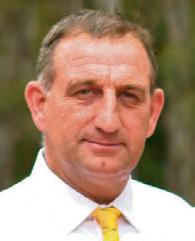

• Client: Large scale Australian beef producing operation (institutional)
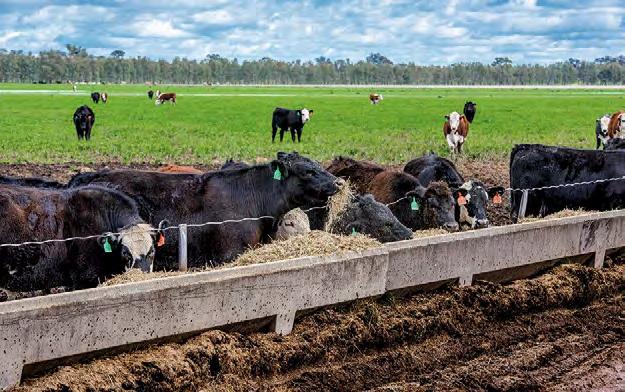

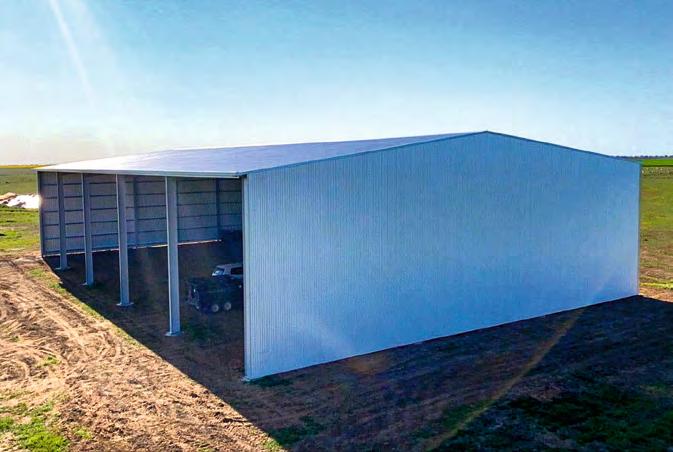
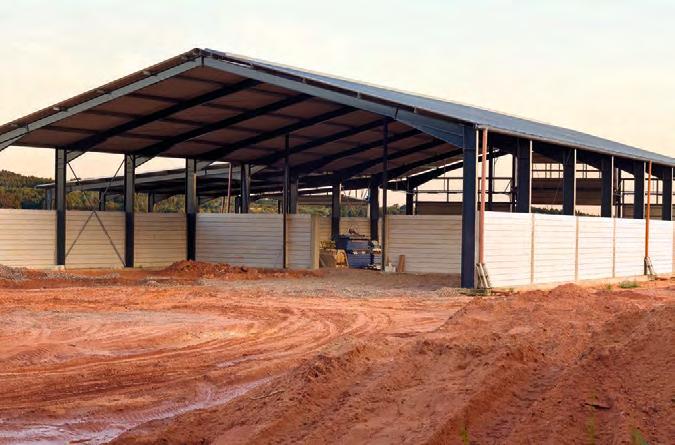

• Parameters: 3-8000 acres ‘turn key’ irrigated mixed farming operation able to produce 5-6000t per/year of hay/fodder + grazing
• Other Notes: Ray White Deniliquin has been asked to find a farm around the Deniliquin region for the expansion of this clients business into the Riverina. The focus of this farm will be to produce hay and fodder for their farms located in other regions as well as on-farm use in containment and controlled feeding areas for their weaner and grow-out operations.



Following good seasons and coming into winter where you may have access to previously irrigated pastures, grazing crops or stocked resources from the autumn break and any remaining summer growth; it’s good to assess your current situation and consider forward planning and preparation if seasonal conditions become adverse.
may involve looking at stock numbers on farm, feed availability, groundcover, and land condition to assess what you may need to do. Stock Management Areas (or Stock Containment Areas) have long been recognised as a management tool to enable retention and feeding of stock through dry periods in a confined area. They allow reduced stocking rate on broader paddocks across farm to maintain groundcover, assist in improving recovery rate and return of stock to paddocks following a break in seasonal conditions.
SMA’s also have other benefits and uses, including:
• Joining to improve bull/ ram contact with cows/ ewes and improve pregnancy rates
• Containment during or following events such as floods or bushfires
• Quarantine of new stock arriving on property
• Hospital paddock for treating sick/ injured stock.
When developing an SMA on farm, there are several factors to consider; including, design, location, size and intended frequency of use amongst others. NSW LLS and DPI have resources which can assist in the planning and implementation of SMA’s and the use of these facilities and considerations.
There are key differences in what is considered a Stock Containment Area and a Feedlot, with these differences impacting some of the planning and permission requirements around the establishment. Farmers need to be aware of what the requirements are, their intended use of the area being established and adhere to planning and permission requirements. Further information can be found in the NSW Government/ LLS ‘A guide to confinement feeding sheep and cattle in NSW’ which has recently been updated.
Murray Local Land Services (MLLS) will soon be conducting surveys relating to adoption, establishment, and use of Stock Management Areas across the region and conducting a cost benefit analysis of their impact. If you have implemented an SMA on farm and would be interested in participating in this survey, please contact Rebecca Stacey via email rebecca.stacey@lls.nsw.gov.au.

weather conditions, including a long and cool spring with abundant rainfall and a mild summer, have posed significant obstacles for local grape growers. Despite the difficulties, the region’s winemakers remain optimistic about the quality of the fruit harvested.
The delayed ripening of grapes due to the prolonged cool weather and increased risk of fungal diseases posed significant challenges for local grape growers in Rutherglen.
The harvest season started three to four weeks later than usual, causing a delay in the overall process. However, the slow ripening period has resulted in grapes accumulating excellent colour and flavour ripeness, with yields expected to be slightly above average.
Winemaker Jen Pfeiffer of Pfeiffer Wines in Wahgunyah expressed the challenges they faced due to the spring flooding, which caused severe damage to their vineyards.
Access to the Sunday Creek vineyard was lost for over a month, resulting in reduced yields of up to 90 percent in certain blocks. Despite the adverse conditions, Jen remains positive about the quality of the vintage, highlighting the exceptional Chardonnay and earlierpicked parcels of Shiraz.
“The well-publicised flooding through the Murray River system saw the river peak at Corowa at 8.07m
on November 15th, causing severe flood damage to our Sunday Creek vineyard, and minor flood damage to our Carlyle vineyard,” she said.
“We lost access to the Sunday Creek vineyard from October 27 to December 9, being unable to drive any vehicles or spray the vineyard during this critical time.
“Parts of the vineyard were completely underwater for weeks, with the vines dropping their leaves and fruit completely.
“The rain continued throughout December and January, until we finally received some respite from it, with no rain falling at all in February, just in the nick of time for the onset of harvest.”
Neighbouring winemaker Damien Cofield of Cofield Wines noted that while the wet weather delayed the harvest and stretched it out over a longer period, it also allowed for better management of grape intake.
“This does have the advantage of us not being overrun with grapes all at once and spacing intakes out a bit, which is good for the team,” the second-generation winemaker said.

“Our Rutherglen grapes actually cropped quite well and were up on last year. Unfortunately, some of our King and Ovens Valley growers reported up to 50 per cent fewer grapes than last year. It is still early, but the quality looks on par with last year.”
Belinda Chambers from Lake Moodemere Estate emphasised the challenge of controlling Downy Mildew during the summer period.
“We had to be vigilant in controlling the risk. We’re lucky we have good drainage in our vineyard which
The 2023 vintage in Rutherglen has come to a close, marking the end of one of the most “challenging” growing seasons in the past decade. The harvest was a long and drawn-out affair this year following a long and cool spring with abundant rainfall and mild summer.“The well-publicised flooding through the Murray River system saw the river peak at Corowa at 8.07m on November 15th, causing severe flood damage to our Sunday Creek vineyard, and minor flood damage to our Carlyle vineyard.”
JEN PFEIFFER
meant we could operate our machinery to keep any disease under control pre-vintage,” she said.
“Despite the weather challenges, the quality and the yield are both better in 2023 compared to the previous year.”

All three winemakers agreed that while the 2023 vintage may not be as consistent as previous years, there will still be some exceptional wines produced.
“Quality is variable, which is indicative of the season, however there are always some gems in the cellar worth discovering,” Jen Pfeiffer said.
“I am very pleased with the quality of my Chardonnay this vintage, it has been a real highlight, while my earlier picked parcels of Shiraz are looking very strong, as well as one outstanding parcel of Muscat, picked just before the Easter rain event.”
Damien Cofield agreed that the quality of the grapes varied more than normal.
“The early picked red grapes such as Sangiovese and Shiraz are very good, but parcels taken at the end of harvest struggled a bit.
“The reds are likely to be of a more refined style, with integrated, not extracted tannins and with lower alcohol levels. This will likely lead to brighter fruit characters in some reds.
“The whites and sparkling should be similar to previous years, with excellent acidity levels keeping the wines fresh.”
Belinda Chambers said quality was fairly consistent across the board.
“The Shiraz and the Durif look particularly good,” she said. “There are pronounced forward fruit flavours and good complexity on the palate.”
While the challenges of the growing season have been significant, the wine industry now faces additional hurdles as outlined in the recent ABARES outlook report.

The report highlights a sharp decline in the value of winegrape production, mainly attributed to low red winegrape prices and crop abandonment caused by wet conditions and disease pressures.

Furthermore, wine exports are expected to decrease due to the oversupply of red wines and ongoing challenges with Chinese tariffs and supply chain constraints.
Despite these challenges, the report does offer a glimmer of hope for the industry with the diversification of Australia’s wine exports into emerging markets beginning to bear fruit.
Southeast Asia has seen strong growth in both the commercial and premium ends of the price spectrum, with key emerging markets such as Thailand, Malaysia, Indonesia, Vietnam, and the Philippines showing promising potential.
“The whites and sparkling should be similar to previous years, with excellent acidity levels keeping the wines fresh.”
DAMIEN COFIELD




Finley High School’s agriculture and primary industries students and staff have been kept on their toes, with the school’s cattle breeding program starting earlier than expected.

Abeautiful calf called ‘Uptown Girl’ came into the world in mid-May, two weeks earlier than anticipated.
She is out of Showgirl, and by Kathleen and Peter Falls’ bull Southcote Maximum Impact M7.
Like her dam, Uptown Girl is shaping up to be a wellbalanced, large-framed female.
Gerald Spry of Sprys Shorthorns Wagga Wagga donated semen from Sprys Thermal Energy, and this was used to artificially inseminate (AI) Showgirl.
She was pregnancy tested in calf by vet Des McRae from Jerilderie last year, and so began the wait to meet her calf.
“The calf arrived about two weeks early, and is a healthy heifer,” Finley High School teacher Robyn O’Leary said.

“She is growing like a mushroom and is a beautiful, friendly calf.
“We are confident that Uptown Girl will go on to be an important cow in the FHS herd.
“She will be too young to compete at the Melbourne Royal this year, however we look forward to presenting
Uptown Girl at some of the local shows in term four this year.”
Following since has been ‘FHS Ultra’, out of Nullamanna Kate and by FHS Ron in early June.
Mrs O’Leary said the school had assistance from Andrew Chesworth to implement the AI program this year.
“Andrew and Kirstie are local farmers. Their children attend, or have attended, Finley High School and been actively involved in agriculture and primary industries lessons and the show team.
“A large number of students elect to study agriculture through the program and involve themselves in the show team.
“We are often very successful, and our program and facilities are the envy of many an ag teacher,” she said.
“To attain this success, we rely heavily on donations of many kinds, from semen to carcase animals, hay to transport, hoof trimming to veterinary work and many things in between.
“We are always seeking donations of small squares of lucerne, clover, or pasture hay and small oaten hay bales to take to shows.
“We are currently needing transport for 14 to 16 steers for the Royal Melbourne Show in September.
“We are very fortunate and incredibly grateful that we have many supporters who see the value in the program and the benefits it brings to the young people with whom we work.”
Another factor that enables success for Finley High’s ag program is the student access to animals and facilities.
“As our farm is on-site, our students can access it at any time - for entire lessons, for a quick 20 minute activity or at short notice.
“This allows students to witness and participate in the many activities that would be undertaken on a working property.”
Integral to this is the availability of adjoining crown land, and land owned by the Catholic Church,” Mrs O’Leary said.
Maggie Bramley with Uptown Girl Showgirl.



As a livestock producer, you have a responsibility to ensure your stock are fit to load before being transported. Take this quiz to check your knowledge and understanding around animal welfare and fit to load guidelines. (Hint there may be one or more correct answers to each question).

1Who is responsible for the welfare of livestock?
a. The owner of the stock
b. No one
c. Everyone – the producer prior to loading, the transporter/driver during loading, unloading and during the journey, and the receiver (processor, agent, saleyard etc) after unloading
2Livestock are regarded not fit to load, if
a. They are unable to walk on their own by bearing weight on all legs
b. They cannot see well enough to walk, load and travel (ie blind in both eyes)
c. They are showing symptoms of a condition that is likely to cause increased pain or distress during a journey (ie embedded horns, cancer eyes)
d. They are in late pregnancy
e. They are not strong enough to make the journey (ie dehydrated or emaciate)
f. All of the above
3
If livestock are affected by eye cancer/s, are they fit to load?
a. Yes, if the cancer is greater than 2cm in size and not affecting vision (ie the animal is not blind in both eyes)
b. Yes, in some cases it may be acceptable to transport animals with small eye cancers (less than 2cm), provided the lesion is free of discharge and not infested with fly larvae
c. If you are in doubt if it is fit to load, you should consult a veterinarian
4
If an animal is unfit to load, what are your options?
a. Treat the animal and transport when recovered
b. Still send it on the truck, the truck driver, stock agent or saleyard will deal with it
c. Consult a veterinarian and transport only under veterinarian advice
d. Humanely destroying the animal
You can also check the glovebox guide: biosecurity, emergency animal diseases and preparing livestock for transport by heading to www.mintrac.com.au and clicking on EAD and biosecurity resources to download your copy of the glovebox guide.

5
If you come across an animal that you are not sure if it is fit to load or not, what should you do?
a. If in doubt, leave it out
b. Send it anyway, it will be ok
For more information around fit to load requirements check out the MLA fit to load guidelines by heading to www.mla.com.au. Click on tools, resources & training, then click resource hubs to find the link for fit to load.



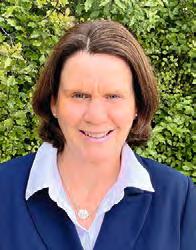

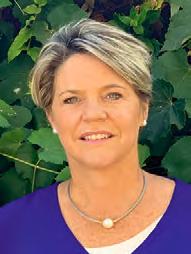






The Goulburn Murray Valley Fruit Fly Area Wide Management Program is reminding property owners, gardeners and orchardists of the need for continued action against fruit fly, despite the arrival of winter.
The cold weather makes it harder for fruit fly to survive, however the pest is able to survive the winter months by taking refuge in warm spots on the landscape in areas such as the foliage of evergreen trees and areas around houses and buildings.

The program’s acting regional coordinator Penny Aston said it is important anyone with a fruit tree or vegetable patch is fruit fly aware and takes action to stop the spread of the pest all year round.
“We know that the fruit flies that are able to survive winter by finding a warm environment will be the cause of a population influx in spring, so continued action through winter is essential,” she said.
“Poor management of fallen fruit in orchards and untendered fruit trees at the back of properties has contributed to population explosions in a number of areas this season.
“We are calling on operational and non-operational orchards in the region to increase their vigilance in how they manage fruit fly on their property.”
Support is available through the program to help gardeners, property owners and growers build their knowledge of the various fruit fly control methods.
“Anyone looking for more information on how to protect against fruit fly can get in touch via email at gmvfruitfly@moira.vic.gov.au or phone on (03) 5871 9222, and we will put them in touch with a field officer who will work through the most effective control options for their particular situation,” Ms Aston said.
“We have identified that area wide management is the best way to minimise the impact of fruit fly on our region and its horticultural industry, and are continuing to work to increase both community and grower awareness about the critical need to be fruit fly aware and take action.
Anyone with a fruit tree or vegetable patch is reminded to pick, prune and protect against fruit fly by taking a few simple measures:
• Remove ripe fruit from the tree and collect fallen fruit to reduce opportunities for fruit fly to breed
• Pick fruit early - as fruit ripens it becomes more attractive to fruit fly so it is import to pick and remove fruit early
• Use netting to create a physical barrier between your fruit or vegetables and fruit fly
• Use traps and bait sprays to control numbers
• Prune fruit trees regularly and keep them to a manageable height
• Consider replacing unwanted and unmanaged fruit trees with non-fruiting alternatives
• Dispose of effected fruit by placing spoilt fruit in a heavy duty plastic bag, sealing it and putting it in
the hot sun for 14 days to cook the larvae or freeze infested fruit for a few days.
Fruit fly poses a serious threat to the Goulburn Murray Valley’s multi-million horticultural industry, with action required by orchardists, property owners and home gardeners to help stop the spread.
“It is essential that growers and property owners in the Goulburn Murray Valley take a range of measures rather than relying on a single action to help control fruit fly,” Ms Aston said.
For more information on fruit fly control, visit www. fruitflycontrol.com.au.

Need held to take your business from chaos and overwhelming to scalable and rewarding?
Chris Green’s book Business by Design could help, and FARMtalk has two copies to give away.

Chris is a leading business coach, and in his book provides a practical guide to achieving your business goals by drawing on more than 20 years’ experience in supporting entrepreneurial business owners to grow their businesses and realise their leadership potential.
Filled with tried and tested tools and tips along with real-life case studies, readers learn how to:
• Set an inspirational strategy;

• Adopt a breakthrough attitude;
• Eliminate key-person risk;

• Rethink and grow your team; and
• Create business systems that work.
Written for business owners who feel stuck and want a path toward profit and greater freedom, Business by Design is the definitive road map to create the thriving business and life you’ve always wanted.

If you would like to win a copy, email your name and contact details to farmtalk@denipt.com.
au. Use the keyword ‘book giveaway’ as the subject line.


Prudence Wheelwright
Nurse and midwife Prue Wheelwright has worked around Australia and across the world, In isolated, far-flung locations and on dangerous frontlines, this passionate and dedicated nurse has put her heart, and often her safety, on the line, day after day, year after year. Prue shares the challenges, joys and heartbreaks in her life as a travelling nurse, from working in the Australian outback to developing a paediatric HIV project in Tajikistan, settingup a 24-hour marternity hospital in an Ethiopian refugee campand working with the Saudi royal family. Most recently she has joined thr Royal Flying Doctors Service, combining her love of travel, adventure and healthcare.
$34.99
Sophie Matterson
In 2020, at the age of thirty-one, Sophie Matterson set out to walk her five camels from Shark Bay in Western Australia to Byron Bay on the east coast. At a time when most of her friends were getting engaged or starting families, Sophie longed for adventure, independence and purpose. She broke up with her long-term boyfriend, packed her belongings into saddlebags, and trained her wild camels to follow her lead. Her thirteen-month solo crossing was the ultimate test of resilience and self sufficiency—with each state in various forms of lockdown, Sophie would often walk for weeks without seeing another soul. She crossed harsh, remote deserts, navigated treacherously beautiful salt lakes, and visited country towns and isolated cattle stations. Along the way she survived life-and -death situations, fell in love in the middle of the Outback, and slowly began to trust herself and her own abilities.

$34.99

Sue Williams
Mary Bligh is no shrinking violet. After an horrific six-month sea voyage from Britian, she proves as strong-willeed as her bloody-minded father, the newly appionted Governor William Bligh. The pair immediately scandalise Sydney with their personalities, his politics and her pantaloons. When three hundred armed solidiers of the Rum Rebellion march on Government House to depose him, the governor is nowhere to be seen. Instead, Mary stands defiantly at the gates, fighting them back with her parasol. Despite being bullied, belittled and betrayed, Mary remains steadfast, even when her desperate father double-crosses her yet again in his last-ditch attempt to cling onto power. But will Mary turn out to be her father’s daughter and deceive him in pursuit of her own dreams and ambitions?
$32.99

Fiona Carruthers
The Australian stock saddle is a triumph of simple, honest bushcraft. Developed in the 1800s in response to the challenges of riding vast distances – often through thick virgin bush and scrub country – the national saddle has proven it’s durability and comfort for more than two centuries. The hardy stock saddle is a much loved outback symbol but it’s story has never been written – untill now. Wild ride captures this coluorful tale, involving colonial pioneers and Aboriginal stockmen and women; bushrangers and young horsemen sent to the Boer War. It catalogues the earliest models produced by amateurs sewing kneepads onto traditional english saddles, through to the development of the modern stock fender. $59.99
These great titles and more available instore. We post direct to you, contact us today to discuss getting your copies posted* *Postage and Handling fees apply.

Theprogram offers a unique chance for two graduates to deepen their knowledge and accelerate their career across the Australian rice industry.
Throughout this year’s 12-month program, the graduates will be based in the rice growing heartland of southern NSW while undertaking placements with key organisations in the Australian rice industry. This includes RGA, Rice Breeding Australia, Rice Extension and the SunRice Group.
RGA president Peter Herrmann said the RGA is proud to be partnering with industry organisations to deliver this exciting new program.
“This program is more than just an opportunity, it’s a launching pad for future industry leaders” said Mr Herrmann.
“Through the application process, we aim to draw a rich mix of graduates from diverse academic backgrounds such as agriculture, science, business and communications, and policy.
“This program enables us to invest in the bright future of our industry. The RGA is committed to fostering capacity building opportunities within the Australian Rice Industry.”
This program is made possible by ‘Building Capacity in the Australian Rice Industry Program’ funded by AgriFutures Australia, combining existing programs and new initiatives with the aim of building industry capacity to ensure the industry meets the challenges of the future.
The 2023 Rice Industry Graduate Program has two streams:
• Research, development and extension - positioned in rural and regional areas with the possibility of attending international conferences, subject to additional funding.
• Agribusiness and policy: Located in both regional and metropolitan areas, with the potential for international travel and participation in international conferences, given extra funding.
For more information regarding the program requirements, contact RGA leadership manager Ainsley Massina at amassina@rga.org.au or phone 0428 859 214.
249 Cressy Street, Deniliquin. Phone 5881 2080. www.deni.com.au
• Get in touch and give us a tip of a great story idea.
• Contribute an article: If you are an expert in your field then contributing once off, or regularly, is a great way to get started in our FARMtalk magazine. Contact Zoe McMaugh at farmtalk@denipt.com.au or 03 5881 2322.
• Become an author: FARMtalk is open to occasional contributors who are experts in their field or authorities on a subject or area. Once you have contributed an article, and the editorial team have approved you, we can set you up with a regular column to contribute. We would love to hear from you. Contact Zoe McMaugh at farmtalk@denipt.com.au or 03 5881 2322.
FARMtalk welcomes community contributions from farmers, experts and professionals who make their living and life on the land. If you would like to contribute, there are several ways to do so.






